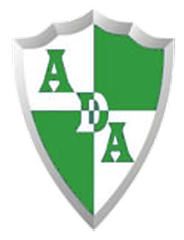
Quebrada del Condorito National Park: Comprehensive Visiting Guide
Date: 04/07/2025
Introduction
Quebrada del Condorito National Park, nestled in the Sierras Grandes of Córdoba Province, Argentina, stands as both a sanctuary of natural splendor and a symbol of conservation success. Spanning more than 37,000 hectares, this protected area is renowned for its dramatic canyons, high-altitude grasslands, and, most notably, as a critical refuge for the Andean condor (Vultur gryphus). The park is a convergence point for biodiversity, indigenous heritage, and sustainable tourism, offering an immersive experience for hikers, birdwatchers, and cultural explorers alike.
For up-to-date information on visiting hours, ticketing, and traveller resources, see the official Argentina National Parks website, La Ruta Natural, and LAC Geographic.
Contents
- Historical and Cultural Background
- Ecology and Conservation Significance
- Visitor Information: Hours, Tickets, and Accessibility
- Main Attractions and Activities
- Travel Tips and Responsible Tourism
- Nearby Attractions and Recommended Itineraries
- Frequently Asked Questions (FAQ)
- Summary and How to Stay Updated
- References
1. Historical and Cultural Background
Indigenous Heritage and Early Significance
The Sierras de Córdoba region, including what is now Quebrada del Condorito, was originally inhabited by indigenous groups such as the Comechingones. These communities adapted to the mountainous environment, utilizing its resources sustainably and revering local wildlife—including the condor, a creature central to Andean mythology and regional identity.
Conservation and National Park Establishment
By the late 20th century, conservationists recognized the urgent need to protect the unique habitats of the Sierras Grandes. Habitat loss and threats to the Andean condor spurred the creation of the park, which became part of Argentina’s national park system in 1996. The formal designation ensured legal protection for over 37,000 hectares, initiating a new era of ecological stewardship, research, and regulated public access (Wikivoyage).
2. Ecology and Conservation Significance
Biodiversity Hotspot
The park is a stronghold for high-altitude grasslands, shrublands, and rocky outcrops, fostering specialized flora and fauna. Noteworthy highlights include:
- Andean Condor: The park is a critical nesting and roosting ground for condors, making it one of the best places in Argentina for observing these majestic birds (LAC Geographic).
- Endemic and Threatened Species: The park harbors at least 176 bird species, 36 mammals (including guanacos), unique reptiles like the Achala green lizard, and rare amphibians (Flora and Fauna of Quebrada del Condorito).
- Ecosystem Services: The area protects the headwaters of vital watersheds, contributing to water quality for much of Córdoba Province (Argentina.gob.ar).
Conservation Initiatives
Active management includes habitat restoration, monitoring of wildlife populations, and invasive species control (notably, the management of non-native trout in streams). Environmental education and sustainable tourism are key strategies for aligning visitor activities with conservation goals (Sustainable tourism at Quebrada del Condorito).
3. Visitor Information: Hours, Tickets, and Accessibility
Visiting Hours
- General Hours: Open daily, 8:00 AM–6:00 PM (hours may shift seasonally or in inclement weather; always check the official website before your visit).
Tickets and Registration
- Entrance: Entry is free, but all visitors must register at the Achala Visitor Centre for safety and monitoring purposes (La Ruta Natural).
- Special Permits: Required for overnight camping and certain activities such as fishing.
- Guided Tours: Recommended for deeper insights and safety; book in advance during peak seasons.
Accessibility
- Some trails and facilities are accessible to visitors with moderate mobility, but much of the terrain is rugged. Contact the park in advance for specific accessibility details.
Getting There
- By Car: Accessible via Route E-34; the final approach involves dirt roads—suitable for high-clearance vehicles.
- Public Transport: Limited bus service to nearby towns; from there, taxis or tour operators can provide access.
4. Main Attractions and Activities
Condor Lookout Points
- Balcón Norte: A moderate 10 km (6-mile) round-trip hike from the visitor center, offering the best opportunity to observe condors riding the thermal currents (Global National Parks).
- Balcón Sur: A more remote and challenging hike for experienced trekkers, with panoramic canyon views.
Hiking and Trekking
- Well-marked trails range from moderate walks to strenuous treks, including descents to the Río de los Condoritos at the canyon base.
- Interpretive signage and guided walks highlight the park’s geology, flora, and fauna (LAC Geographic).
Wildlife and Birdwatching
- Watch for condors, guanacos, endemic lizards, and a rich array of birds.
Camping and Night Activities
- Two authorized campsites (no services; registration required).
- Night hikes and stargazing are popular due to minimal light pollution and the opportunity to observe nocturnal wildlife (National Parks Association).
5. Travel Tips and Responsible Tourism
- Pack Essentials: Bring all food, water, and hiking gear; no food services or potable water are available in the park.
- Dress Appropriately: Weather is variable—layered clothing, sun protection, and sturdy boots are recommended.
- Safety: Limited phone coverage; always inform someone of your plans.
- Leave No Trace: Carry out all waste, stay on marked trails, and avoid disturbing wildlife.
- Fires: Only allowed in designated areas and under strict conditions due to wildfire risks.
- Support Local Communities: Stay and dine in nearby towns such as Villa Carlos Paz, La Cumbrecita, and Villa Giardino.
For more tips, see Responsible tourism guidelines.
6. Nearby Attractions and Recommended Itineraries
- La Cumbrecita: An alpine-style village known for eco-tourism and hiking.
- Villa Giardino: Offers artisan markets and cultural sites.
- Córdoba City: Explore colonial architecture and museums.
- Sierras Grandes: Opportunities for horseback riding, nature tours, and further exploration.
A suggested itinerary: morning hiking in the park, followed by an afternoon visit to Villa Carlos Paz or Córdoba historical sites.
7. Frequently Asked Questions (FAQ)
Q: What are the park’s visiting hours?
A: 8:00 AM–6:00 PM daily, with possible seasonal adjustments.
Q: Is there an entrance fee?
A: Entry is free, but registration at the visitor center is required.
Q: Are pets allowed?
A: No, to protect wildlife and habitats.
Q: Is camping allowed?
A: Only in designated, registered campsites.
Q: Are guided tours available?
A: Yes, especially recommended for wildlife viewing and cultural insights.
Q: Is the park accessible for people with disabilities?
A: Some main areas are accessible, but much of the terrain is rugged; check in advance for details.
8. Summary and How to Stay Updated
Quebrada del Condorito National Park is a premier destination for nature, wildlife, and culture enthusiasts. Its establishment marks a milestone in Argentina’s conservation movement, safeguarding unique ecosystems and fostering sustainable tourism. Plan your visit during spring or autumn for optimal weather and wildlife activity. Be sure to register upon entry, respect all park regulations, and support conservation by practicing responsible tourism.
For the latest information on hours, guided tours, and events, visit the official park website and consider downloading the Audiala app for audio guides and real-time updates.
9. References
- Quebrada del Condorito National Park Visitor Guide: History, Ecology, Tickets, and Tips, 2024, Wikivoyage
- Ecological and Cultural Significance of Quebrada del Condorito National Park: Visiting Hours, Tickets, and Guide, 2024, LAC Geographic
- Quebrada del Condorito National Park: Visiting Hours, Tickets, and Top Attractions in Córdoba, 2024, La Ruta Natural
- Visiting Quebrada del Condorito National Park: Hours, Tickets, and Conservation Tips in Córdoba, 2024, Argentina.gob.ar


